458th Bombardment Group (H)
Major O’Neill’s Test Hop
May 12, 1944
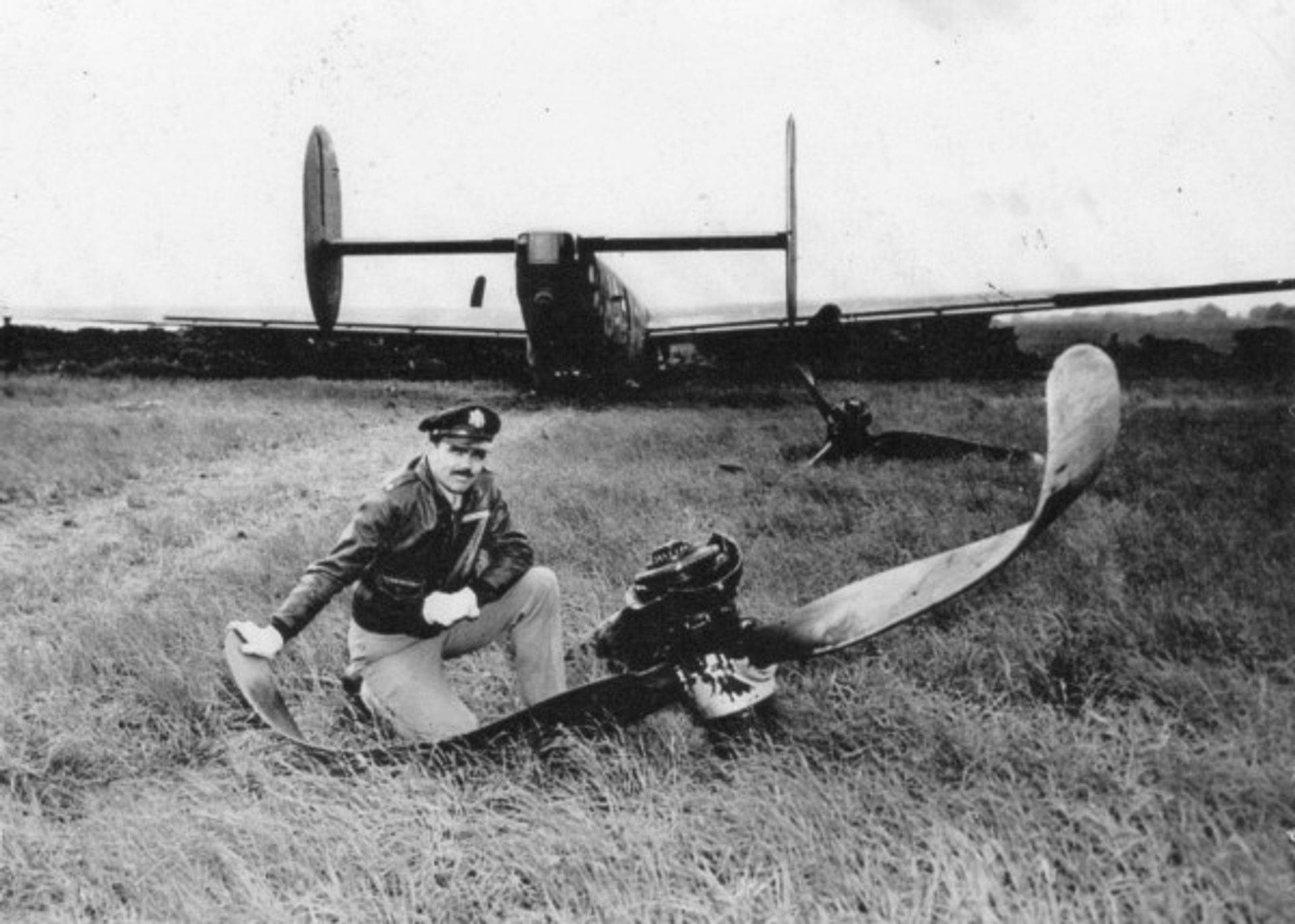
Major Frederick M. O’Neill, 753rd Squadron CO, examines a propeller from his close call.
(Photo: Fred Carr via Mike Bailey)
Official Statement
DESCRIPTION OF ACCIDENT
Major O’NEILL made a normal pre-take off check and found everything normal. The take-off was normal on R/W 23. Wheels and flaps were raised and on reaching 700-800 feet the power was reduced to 2500 RPM and 40 inches of manifold pressure. At this time the ship was felt to pull to the right and #3 MP had dropped to 30 inches. An attempt [was made] to feather #3 engine but it would not completely feather and kept windmilling slowly. The airspeed had dropped to 130 MPH and the A/C was losing altitude rapidly. The throttles were immediately advanced to full open position. The results were that #1 and #2 engines gave only about 35 inches of MP and [illegible] went up to 52 inches. Ten degrees of flap were put down. The amount of power available was not sufficient to keep ship in air and so a turn to the right was made to avoid some houses that were directly in the flight path and the ship crash land[ed] in an open field.
Due to the damaged condition of the A/C and the engines, it was not possible to determine the cause of the loss of power on #1 and #2 engines.
Major O’Neill (pilot) & 1Lt Leland Griffith (co-pilot)

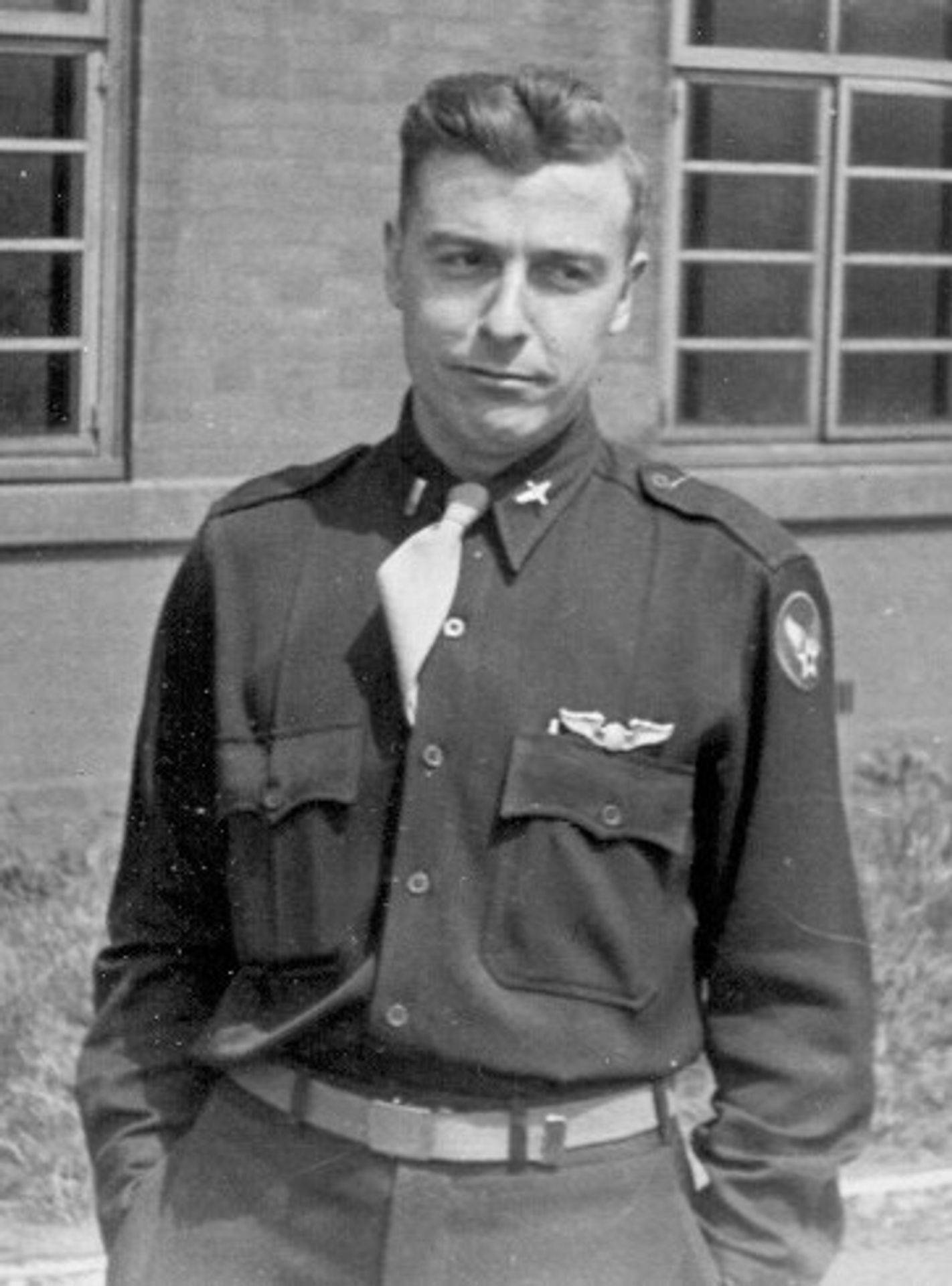
Photos: Robert Carroll & Anne Zimmer
Accident Report #44-5-12-535
753d BOMBARDMENT SQUADRON (H)
AAF 123 APO 558
Office of the Operations Officer
17 May 1944
SUBJECT: Report of Crash of Aircraft #671
TO: Air Inspector 458th Bombardment Group (H)
Pre-take off check of aircraft revealed everything normal. Take off was normal on runway #23. Wheels and flaps were raised and on reaching 700 feet the MP was reduced to 40 inches and RPM’s set at 2500. Shortly after 800 feet was reached it was noticed that aircraft began pulling to the right and #3 MP had dropped to 20 inches and #1, 2, and 4 had dropped to 30 inches. The #3 feathering button was hit and the propeller partially feathered. Attempts were made to completely feather the propeller but it continued to windmill slowly. Since the airspeed was down to 130 MPH and the aircraft was losing altitude full throttle was applied with the result that #1 and 2 MP went to 35 inches and #4 went up to 52 inches. Flaps were let down 10°. No attempts were made to salvo practice bombs due to being over houses. The aircraft continued to settle, no more power was available, so a gentle turn right was made toward and open field. Flaps were let down 20°. The crew was warned of a forced landing and took stations behind the pilot’s and co-pilot’s seats. As soon as it was evident that the houses would be cleared, full flaps were dropped. Immediately prior to striking the ground, the aircraft straightened out and Lt Griffith cut the switches. The aircraft made a belly landing and skidded in a straight line for approximately 150 yards. No one was injured and the crew behaved normally without being excited.
Signed
FREDERICK M. O’NEILL
Major, Air Corps
Commanding
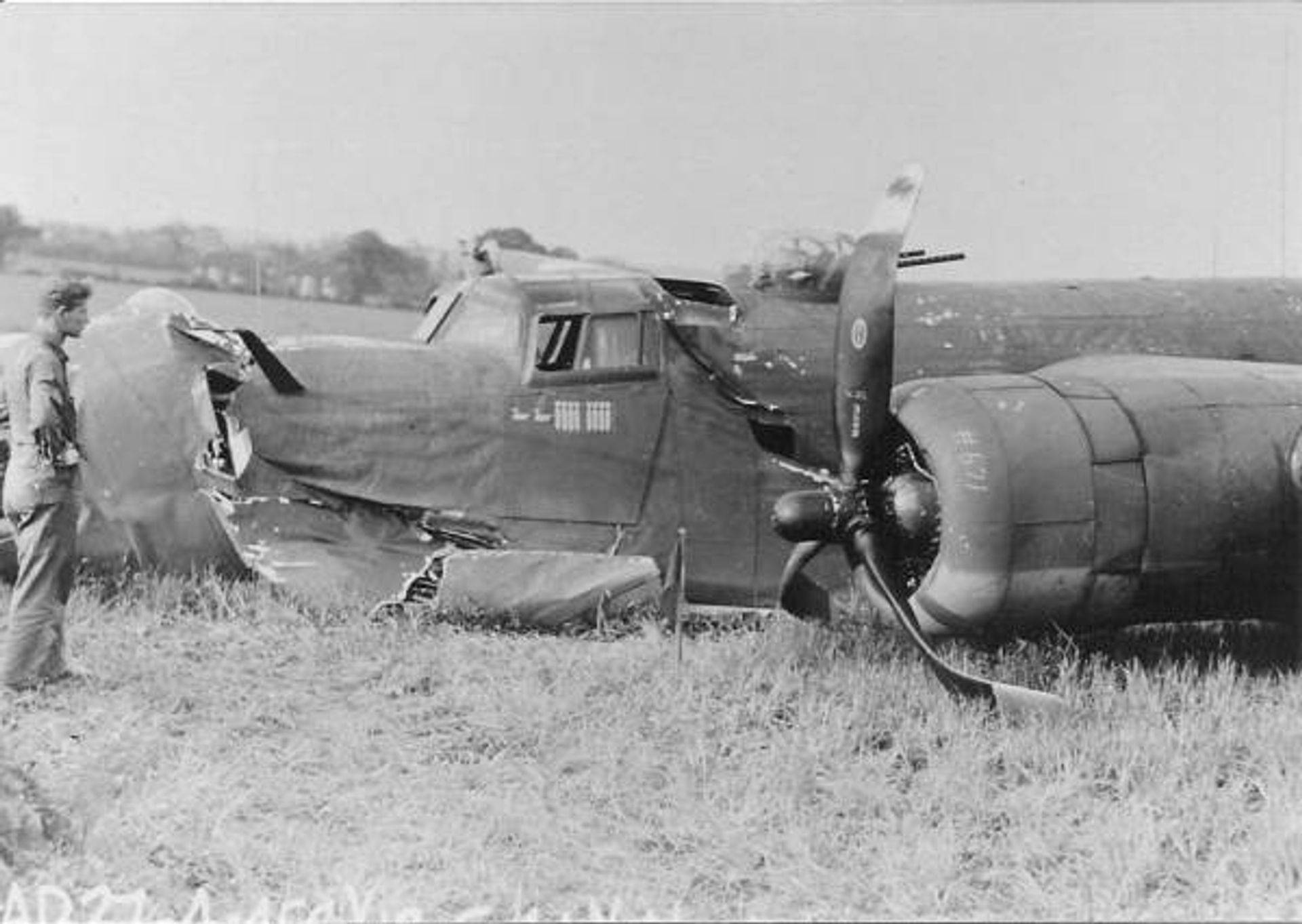
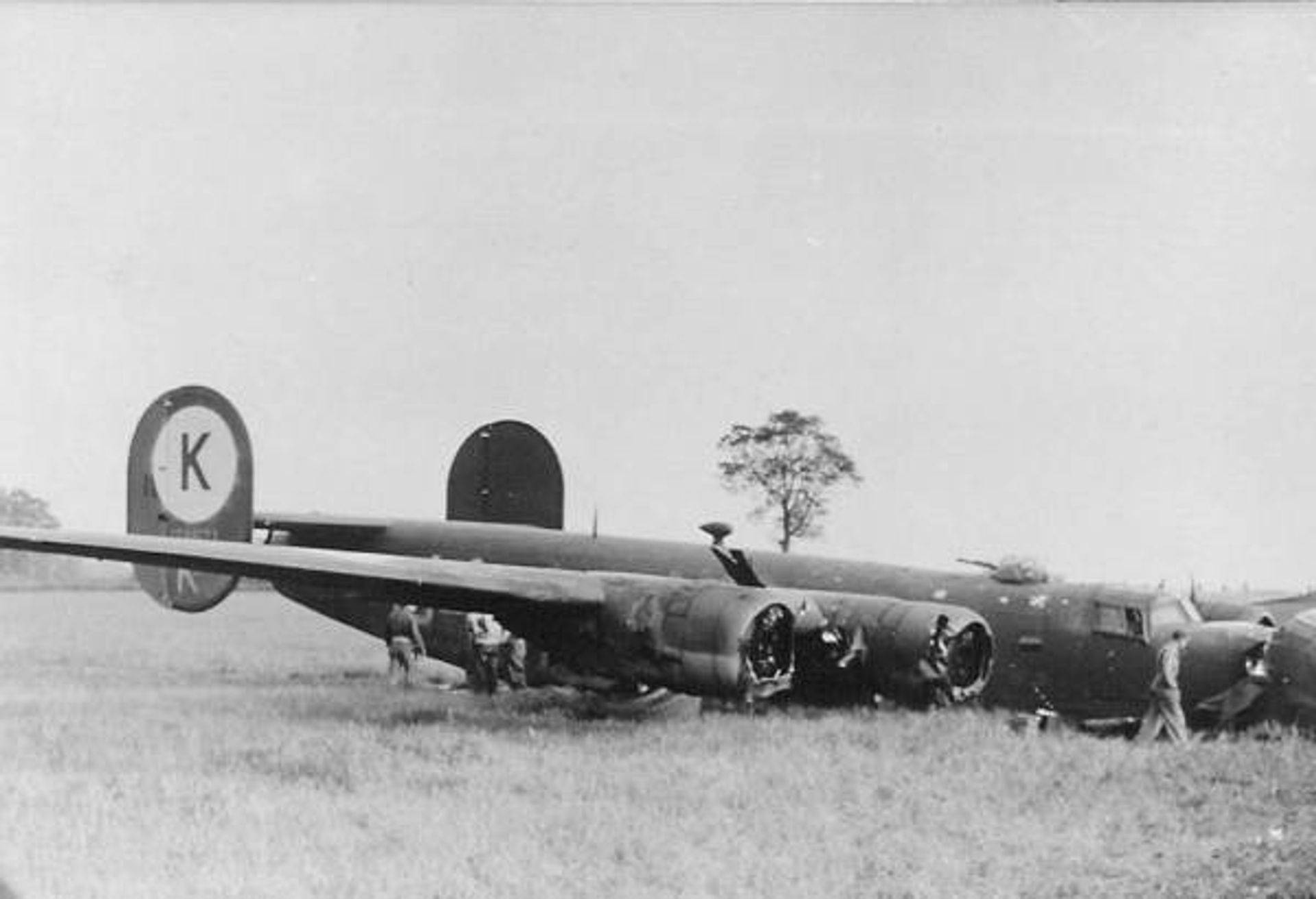
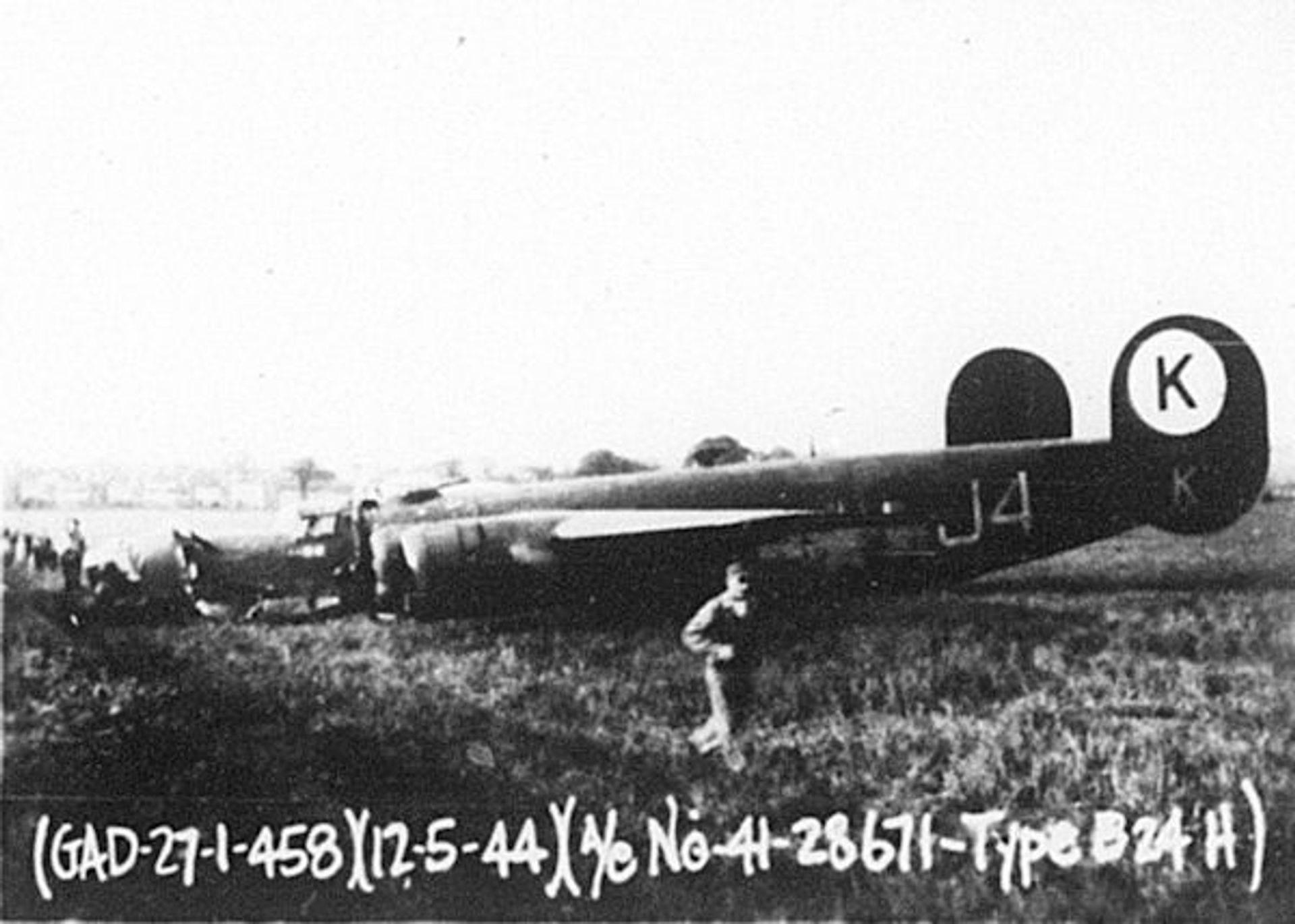
Photos: Chris Albert
News Article of crash
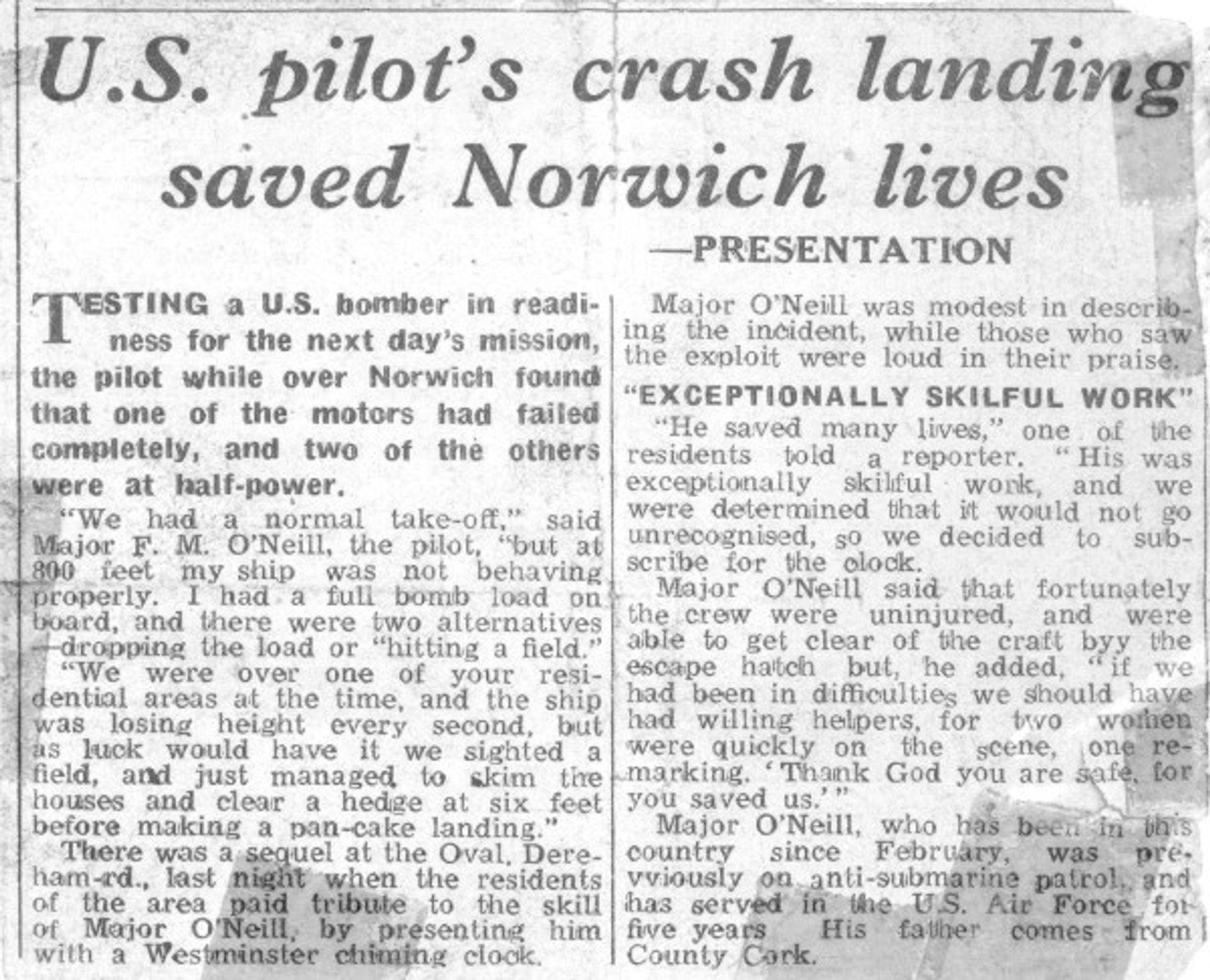
Courtesy: Harold Armstrong
Letter from Mike Bailey, Norwich
[Regarding the photo of Fred O’Neill with the aircraft], I borrowed the original print from an 80-year old Norwich man named Fred Carr who was a friend of Fred O’Neill.
On 12th May 1944, Fred O’Neill, then a Captain, was test-flying B-24H 41-28671 J4-K and was at 600ft over Norwich when all four engines quit at the same time. He managed to get the plane into a gliding attitude and just managed to clear the rooftops of the Larkman Estate on the outer fringes of west Norwich.
Fred Carr’s house was the final hurdle before the open fields and the B-24 missed his chimney by mere inches before taking out his hedge and bellying into the ground beyond. Fred, at that time a 16-year old Air Training Corps Cadet, was first on the scene and was amazed to find that there were only two men aboard – the pilot and flight engineer. [There were actually four men on board – see accident report above.]
It seems that before the test flight they had neglected to check on the amount of fuel in the tanks and had run out. Jim Isbell’s comments are unrecorded, but would I be interested to learn what transpired!
The people of the Larkman Estate gave a party for Fred O’Neill at the Oval Pub and in appreciation of his flying ability presented him with an inscribed clock. Fred Carr always remembered the event and many, many years later determined to track down Fred O’Neill to thank him again for missing his dad’s house. This he was eventually able to do and upon getting in touch was invited to Fred’s home in Philadelphia, which he complied with on his next visit to the U.S.A. The presentation clock was still ticking away on the mantelpiece. They remained good friends until O’Neill’s death in 1993.
B-24H-10-DT 41-28671 J4 K


April 8, 1944: Ship #671 after returning from Brunswick, Germany. Flown by 1Lt Steven Davidson’s crew
Photos: Aaron Oakes / George Reynolds

